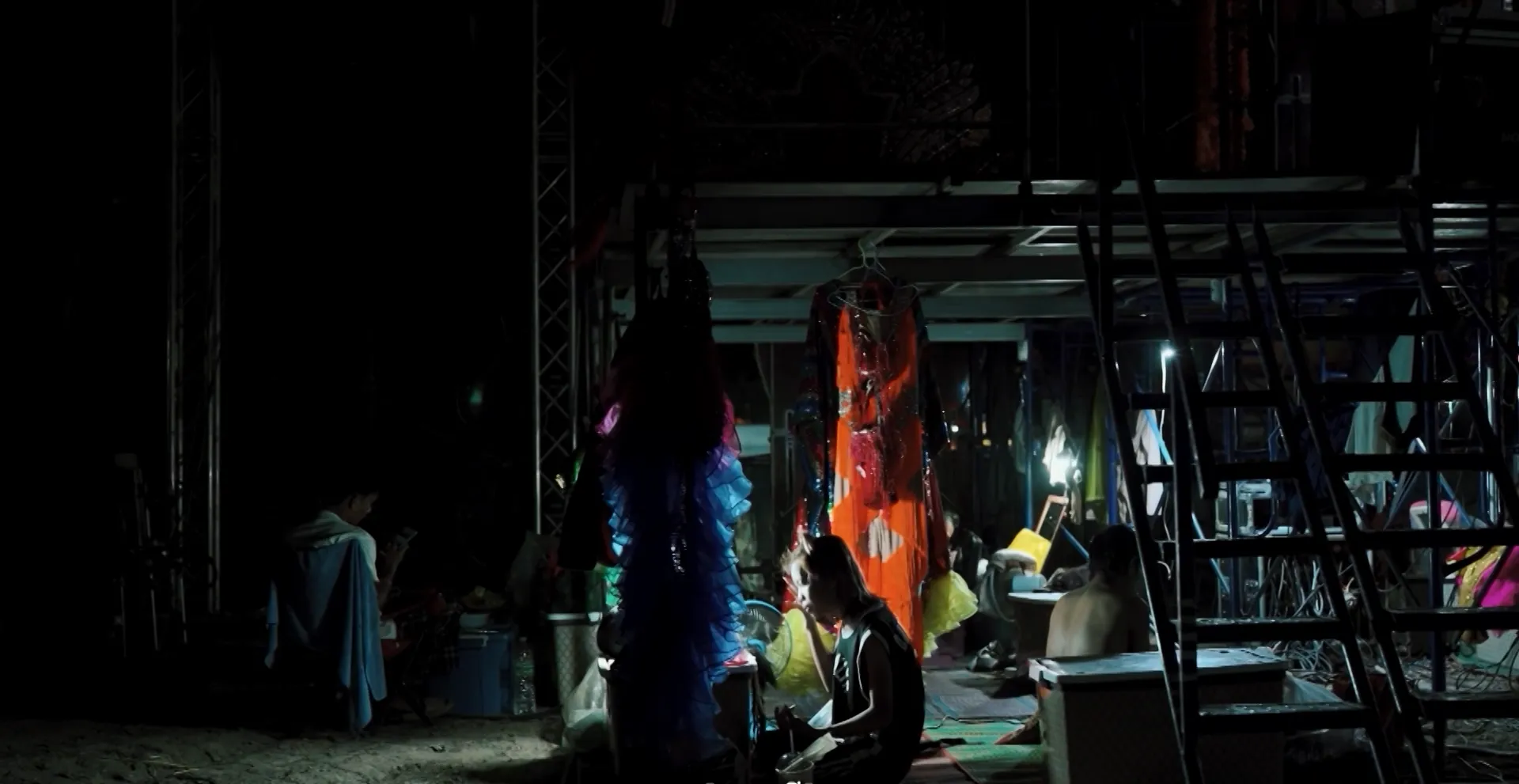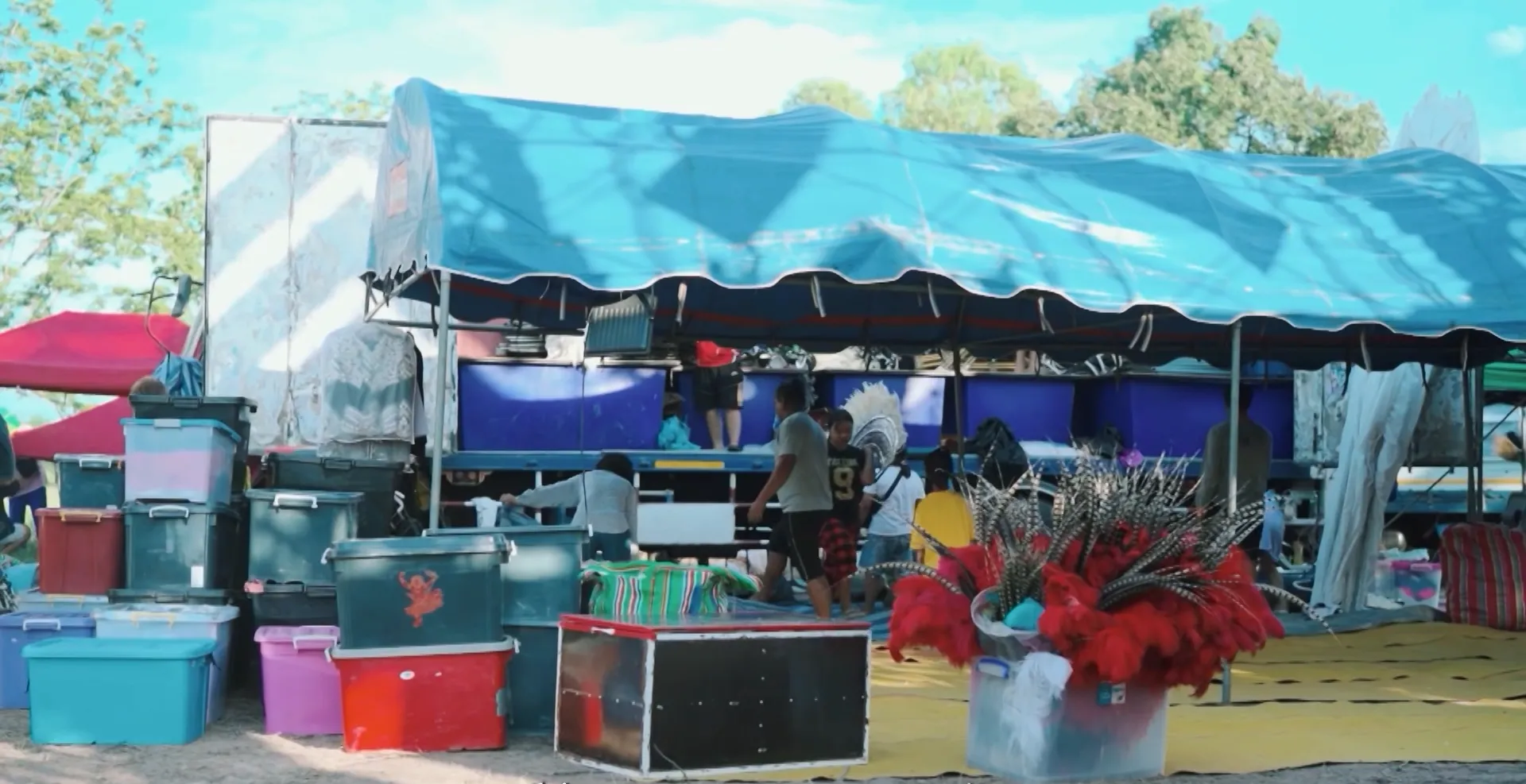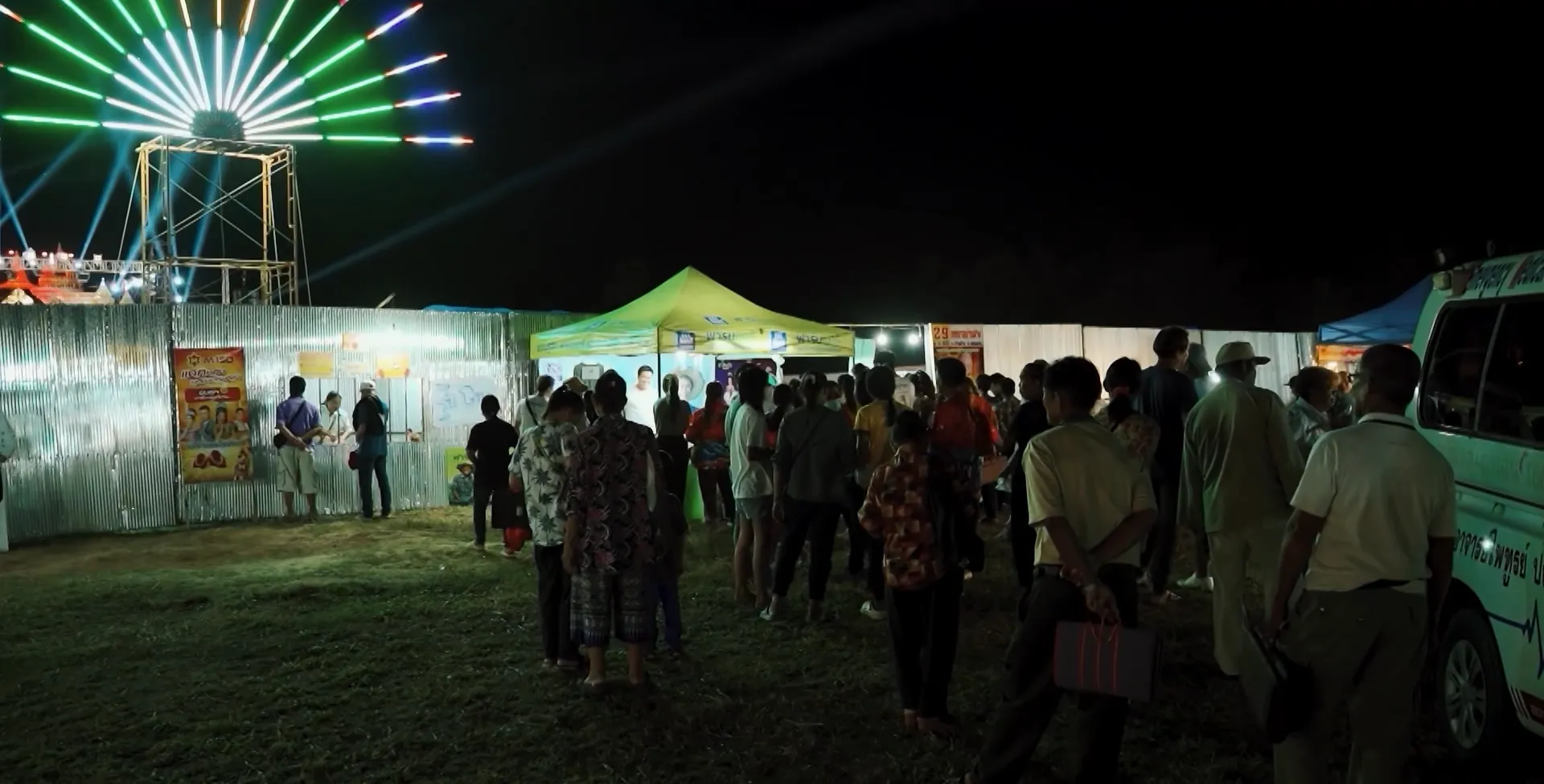Bittersweet Joy: Mor Lam — A Life of Entertainment on a Tightrope
Read 0
Mor Lam Isaan Workers: From Folk Art to Billion-Baht Soft Power — Joyful Beats that Drown Out Artists’ Rights
Behind the Mor Lam stage lies an entertainment industry where performers work until sunrise, face unstable incomes, and live with an uncertain future — all to create the “Muan Suen Ho Saew” joy for their audiences.
The man that hath no music in himself,
Nor is not moved with concord of sweet sounds,
Is fit for treasons, stratagems and spoils;
If one were to measure humanity by its musical culture as this verse suggests, the people of Isaan would surely “top the rankings.” The region’s rich culture isn’t only expressed in its language, cuisine, traditions, or textiles — music and the performing arts are equally indispensable. The moment the sounds of the phin and khaen rise in the air, anyone nearby will immediately recognize that “Isaan music” is being played — and that a vibrant performance of Mor Lam is soon to follow.
From its humble beginnings as ceremonial chanting and storytelling within local communities, Mor Lam has grown into large-scale stage productions complete with lights, sound systems, and dancers. Once a rural folk performance, it is now a creative industry generating nearly 7 billion baht in economic value and creating almost 40,000 jobs annually (Siwaporn Fongthong, 2022). Whenever there’s a merit-making festival or celebration in Isaan, you can bet there will be a Mor Lam troupe bringing joy to the dance grounds. Top-tier troupes are booked a year in advance, performing 200–250 shows per season across nine months before the rainy-season break. A single booking typically costs around 300,000 baht.
Wherever a show takes place, vendors flock to sell food and goods, stimulating local economic activity. On the surface, Mor Lam might appear to be a thriving and sustainable business.
It’s true that famous Mor Lam singers can earn fees on par with television stars. But did you know most dancers only earn the daily minimum — around 500 baht? Their “average” work night is at least nine hours long, performing with a smile from 9 p.m. until 6 a.m., six or seven nights a week. After leaving one stage, they travel across provinces to perform the next night, sleeping only in daylight hours or on a fan-cooled bus.
Their showers might be taken at temple bathrooms or outdoor faucets. Makeup and costumes are prepared backstage under hot conditions and buzzing neon lights. Savings are a must, as the only health coverage most have is the government’s basic “Gold Card.” A single illness could cost a week’s earnings, or require them to take unpaid leave and queue from dawn at public hospitals. And once they reach their late 30s or early 40s — already considered “old” in this line of work — there may be no positions, benefits, or safety nets left for them.
And that’s without mentioning the comedians, supporting actors, musicians, stage convoy crews, production teams, drivers, and countless others. A large Mor Lam troupe can have 200–400 members. After expenses, it’s no surprise that many only take home a handful of bills.
This is especially tough for “closed-gate” concerts, where there is no sponsoring host and the operator sells tickets directly. Mor Lam, as a community-rooted art form more than a century old, has long been watched for free or for token amounts of 10–20 baht. Asking Isaan audiences to pay 200 baht or more often invites backlash. The same goes for show length: if the troupe doesn’t perform until sunrise, they can expect jeers from the crowd.
Compare that with international artists in Bangkok who can command tens of thousands of baht per ticket for a 90-minute show — the disparity is disheartening. Both are art forms requiring comparable creativity, resources, and effort, so why should one be valued so much less? Must the worth of local culture always fall short of that from abroad or the capital?
These performers are workers — laborers in the business of joy, soothing audiences with music and lifting them from fatigue. But the “muan suen ho saew” (festive bliss) they bring comes at a price: their health, their future, and the physical and emotional labor they give. For this reason, government support is essential if Mor Lam is to be elevated as a Soft Power export — something that already sparks interest from foreigners who witness it. Private sector aid alone cannot bring lasting improvements to the lives of these “creative workers.”
While some major troupes have registered as legal companies to offer group health insurance, draft fair contracts, and establish structured pay scales, not all have the capacity to provide long-term career stability. And even the most successful performers can be denied visas for overseas tours because their occupation is classified simply as “freelance,” making it hard to prove professional credibility. Talent alone is not enough; Soft Power cannot spread internationally if the people behind it are structurally excluded.
This points to where the state could step in to address systemic problems in the Mor Lam industry — for example, by creating dedicated provincial or district performance venues. This would ensure safer, standardized shows and improve quality of life for both performers and audiences, while reducing costs for organizers. An upgraded environment could also encourage audiences to pay more, which in turn would allow higher wages for troupe members.
In addition, Associate Professor Dr. Satsathram Thammabutsadee of Thammasat University — an expert in welfare state policy — has suggested measures that would benefit not only Mor Lam artists but creative workers in all art forms. These include a guaranteed income fund for artists, support for unionization and professional networks, a universal pension system, and debt relief or forgiveness programs for creative laborers. Such policies could go a long way toward making “artist” a sustainable profession.
If that day comes, Mor Lam will no longer be seen merely as a pastime — something done for fun until one’s career “expiration date” arrives.
It will be recognized as a profession worthy of pride, carrying forward the nation’s cultural heritage.
And the Thai people will no longer risk being seen as “strange at heart” — worthy of scorn — for neglecting their own music and art.
Experience and understand the life of Mor Lam performers in the documentary ร้องลำทำงาน (The Mhor Lum Story) — watch now at www.VIPA.me and VIPA application, or click www.vipa.me/th/watch/13505 📺
.
References
Mor Lam and the Economy, Society, and Health of the Isaan People by Siwaporn Fongthong et al.
Thai PBS
The Isaan Record
About Author
Oakland Krist
a pop culturist who breathes it like air | a storyteller with pretty much still in the making | a little poetic but absurd at the same time







